The most recent National Assessment of Educational Progress showed that only 15% of eighth graders performed at or above the most basic level of proficiency in American history. Mission US aims to get students to care about history by seeing it through the eyes of peers from the past.
The goals of Mission US are to help middle and high school students:
- Learn how Americans struggled to realize the ideals of freedom, democracy, and equality
- Understand the role of ordinary men and women, including young people, in history
- Develop historical empathy
- Build understanding and critical perception to think like an historian
In each mission, players take on the role of a young person at a pivotal time as they meet historic figures, witness key events, grapple with multiple perspectives, make difficult choices, and experience consequences in a historical scenario with no easy answers. In doing so, they gain insight into how ordinary people shaped, and have been shaped by, our past.
For Crown or Colony?
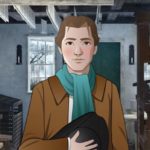 This mission puts players in the shoes of Nat Wheeler, a printer’s apprentice in 1770 Boston. They encounter both Patriots and Loyalists, and when rising tensions result in the Boston Massacre, they must choose where their loyalties lie. Originally prototyped in 2007 and launched in 2010, this award-winning first game in the series was updated in 2018 and is now available online and as a free iPad app. Learn more:
This mission puts players in the shoes of Nat Wheeler, a printer’s apprentice in 1770 Boston. They encounter both Patriots and Loyalists, and when rising tensions result in the Boston Massacre, they must choose where their loyalties lie. Originally prototyped in 2007 and launched in 2010, this award-winning first game in the series was updated in 2018 and is now available online and as a free iPad app. Learn more:
- Educator’s guide
- The team behind For Crown or Colony?
- White paper about the process of revitalizing For Crown or Colony?
- Archived webinar
- Research bibliography
Flight to Freedom
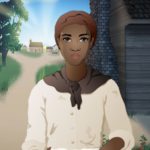 In this mission, players take on the role of Lucy, a 14-year-old girl enslaved in Kentucky who escapes to Ohio. As Lucy joins a community of abolitionists, players discover that life in the “free” North is dangerous and difficult. In 1850, the Fugitive Slave Act threatens all African Americans in the North and brings new urgency to the anti-slavery movement. Winner of the prestigious Japan Prize for Educational Media, “Flight to Freedom” is based on the latest scholarship about slavery and the antislavery movement in the upper South and border states in the critical decade leading up to the Civil War. Because we recognized that slavery is a complex and challenging topic to teach, great care went into the design and scripting. As with all Mission US games, the designs were meticulously researched and based on existing historical images; narrative outlines and scripts were reviewed in detail by noted historians, educators, and other stakeholders; and testing with diverse groups of students and teachers was an ongoing part of the design process. In the educator’s guide, more than 300 pages of background information, discussion starters, primary source documents, suggestions for further reading and research, and other free resources help contextualize Flight to Freedom and support understanding of the difficult choices and circumstances faced by enslaved and free African Americans. Learn more:
In this mission, players take on the role of Lucy, a 14-year-old girl enslaved in Kentucky who escapes to Ohio. As Lucy joins a community of abolitionists, players discover that life in the “free” North is dangerous and difficult. In 1850, the Fugitive Slave Act threatens all African Americans in the North and brings new urgency to the anti-slavery movement. Winner of the prestigious Japan Prize for Educational Media, “Flight to Freedom” is based on the latest scholarship about slavery and the antislavery movement in the upper South and border states in the critical decade leading up to the Civil War. Because we recognized that slavery is a complex and challenging topic to teach, great care went into the design and scripting. As with all Mission US games, the designs were meticulously researched and based on existing historical images; narrative outlines and scripts were reviewed in detail by noted historians, educators, and other stakeholders; and testing with diverse groups of students and teachers was an ongoing part of the design process. In the educator’s guide, more than 300 pages of background information, discussion starters, primary source documents, suggestions for further reading and research, and other free resources help contextualize Flight to Freedom and support understanding of the difficult choices and circumstances faced by enslaved and free African Americans. Learn more:
- Educator’s guide
- The team behind Flight to Freedom
- Common Sense Media’s review of Flight to Freedom
- Classroom videos
- Research bibliography
A Cheyenne Odyssey
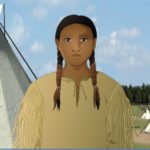 Players experience events as Little Fox, a Northern Cheyenne boy whose life is changed by the encroachment of white settlers, railroads, and U.S. military expeditions. As buffalo diminish and the U.S. expands westward, players experience the Cheyenne’s persistence through conflict and national transformation. Winner of the Games for Change Award for Most Significant Impact, this mission was developed in close collaboration with representatives of the Northern Cheyenne Tribe at Chief Dull Knife College, a tribally-managed institution on the Northern Cheyenne reservation in Montana. President Richard Littlebear and his colleagues consulted on educational content, scripting, design, and casting for the game, and all actors voicing the roles of the Northern Cheyenne characters are Northern Cheyenne themselves. Learn more:
Players experience events as Little Fox, a Northern Cheyenne boy whose life is changed by the encroachment of white settlers, railroads, and U.S. military expeditions. As buffalo diminish and the U.S. expands westward, players experience the Cheyenne’s persistence through conflict and national transformation. Winner of the Games for Change Award for Most Significant Impact, this mission was developed in close collaboration with representatives of the Northern Cheyenne Tribe at Chief Dull Knife College, a tribally-managed institution on the Northern Cheyenne reservation in Montana. President Richard Littlebear and his colleagues consulted on educational content, scripting, design, and casting for the game, and all actors voicing the roles of the Northern Cheyenne characters are Northern Cheyenne themselves. Learn more:
- Educator’s guide
- The team behind A Cheyenne Odyssey
- Common Sense Media review for A Cheyenne Odyssey
- Research bibliography
City of Immigrants
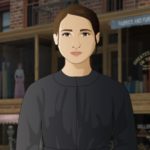 Players navigate New York’s Lower East Side as Lena, a young Jewish immigrant from Russia. Trying to save money to bring her parents to America, she works long hours in a factory for little money and gets caught up in the growing labor movement. Winner of an International Serious Play Awards gold medal, this mission was developed in partnership with the Lower East Side Tenement Museum, which consulted on historical content for the game and development of educators materials. The Museum building and its artifacts also served as models for design of the game’s locations, costumes, and props. Learn more:
Players navigate New York’s Lower East Side as Lena, a young Jewish immigrant from Russia. Trying to save money to bring her parents to America, she works long hours in a factory for little money and gets caught up in the growing labor movement. Winner of an International Serious Play Awards gold medal, this mission was developed in partnership with the Lower East Side Tenement Museum, which consulted on historical content for the game and development of educators materials. The Museum building and its artifacts also served as models for design of the game’s locations, costumes, and props. Learn more:
Up from the Dust
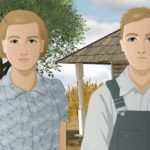 Players alternate between the roles of teenage twins Frank and Ginny Dunn, whose family wheat farm is devastated by the Great Depression and Dust Bowl. As they experience the hardships of the 1930s, players learn about Americans’ strategies for survival – as individuals, communities, and a nation. Winner of a Gold Parents’ Choice Award, Up from the Dust is available online and as a free iPad app. Learn more:
Players alternate between the roles of teenage twins Frank and Ginny Dunn, whose family wheat farm is devastated by the Great Depression and Dust Bowl. As they experience the hardships of the 1930s, players learn about Americans’ strategies for survival – as individuals, communities, and a nation. Winner of a Gold Parents’ Choice Award, Up from the Dust is available online and as a free iPad app. Learn more:
- Educator’s guide
- The team behind Up from the Dust
- Parents Choice Awards review of Up from the Dust
- Summative research study findings
- Research bibliography
Prisoner in My Homeland
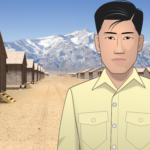 Prisoner in My Homeland follows the experiences of teenager Henry Tanaka, whose family is forced to leave their home on Bainbridge Island, WA, for a prison camp in Manzanar, CA. Players grapple with the choices and challenges faced by more than 120,000 Japanese Americans as they coped with their unjust incarceration during World War II. The Mission US team collaborated closely with advisors and members of the Japanese American community to develop Prisoner in My Homeland. Densho, a digital archive that preserves oral histories and other primary source materials on the incarceration, consulted on content development for the game and its supporting educator curriculum guide. An advisory board of leading scholars and researchers of the history of the incarceration and members of the Bainbridge Island Japanese American Community guided development of the game’s historical content and narrative. Learn more:
Prisoner in My Homeland follows the experiences of teenager Henry Tanaka, whose family is forced to leave their home on Bainbridge Island, WA, for a prison camp in Manzanar, CA. Players grapple with the choices and challenges faced by more than 120,000 Japanese Americans as they coped with their unjust incarceration during World War II. The Mission US team collaborated closely with advisors and members of the Japanese American community to develop Prisoner in My Homeland. Densho, a digital archive that preserves oral histories and other primary source materials on the incarceration, consulted on content development for the game and its supporting educator curriculum guide. An advisory board of leading scholars and researchers of the history of the incarceration and members of the Bainbridge Island Japanese American Community guided development of the game’s historical content and narrative. Learn more:
- Video overview
- Educator’s guide
- The team behind Prisoner in My Homeland (full credits list)
- Meet the people behind Prisoner in My Homeland (team biographies)
- Newsweek article about Prisoner in My Homeland
- CUNY TV Asian American Life news segment about the mission
- Research bibliography
A Note about Flash
The Mission US series was originally developed in Adobe Flash, a platform that was phased out in January 2021, but we are in the process of rebuilding the games in an updated Unity engine. For Crown or Colony?, A Cheyenne Odyssey, City of Immigrants, Up from the Dust, and Prisoner in My Homeland are already available in Unity, meaning they are accessible via web browsers on Macs, PCs, and Chromebooks. We have begun the process of rebuilding Flight to Freedom. If you are interested in previewing and providing feedback on the beta when it becomes available, please contact us at missionus@thirteen.org.
For more information about the games and supporting materials, visit the Help page. Get updates about Mission US on Facebook and Twitter. To share your feedback or for assistance, email us at missionus@thirteen.org.